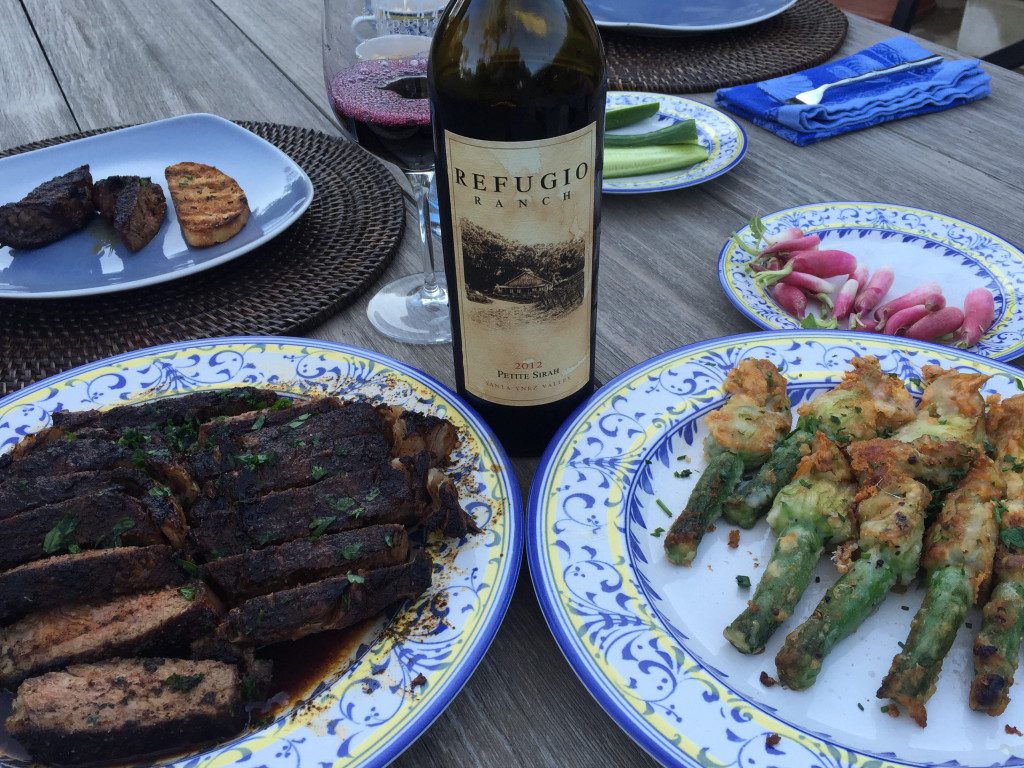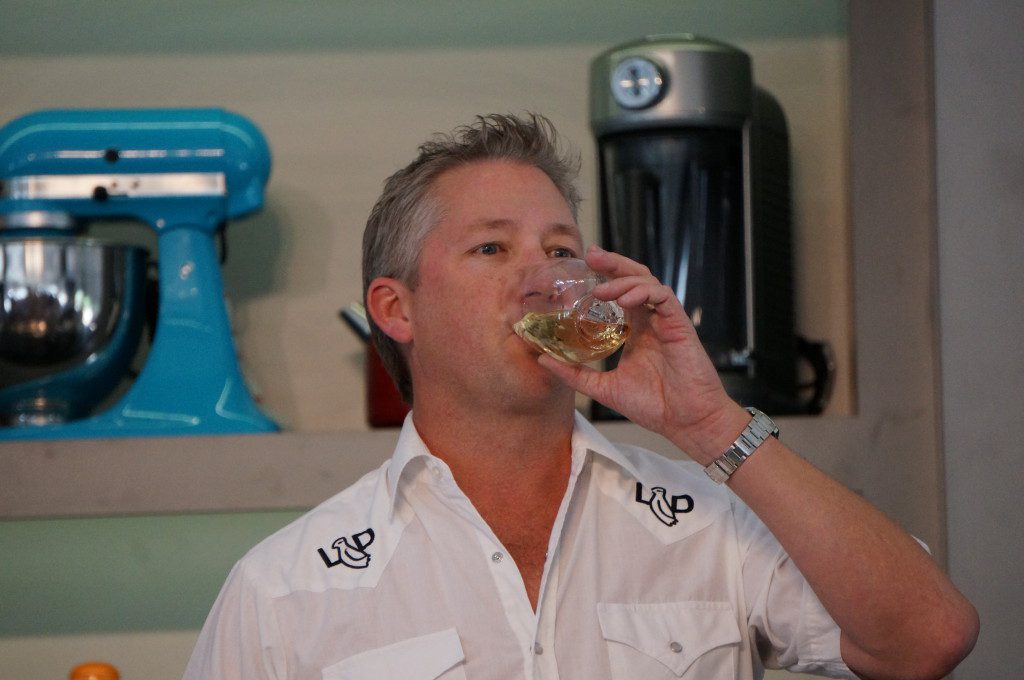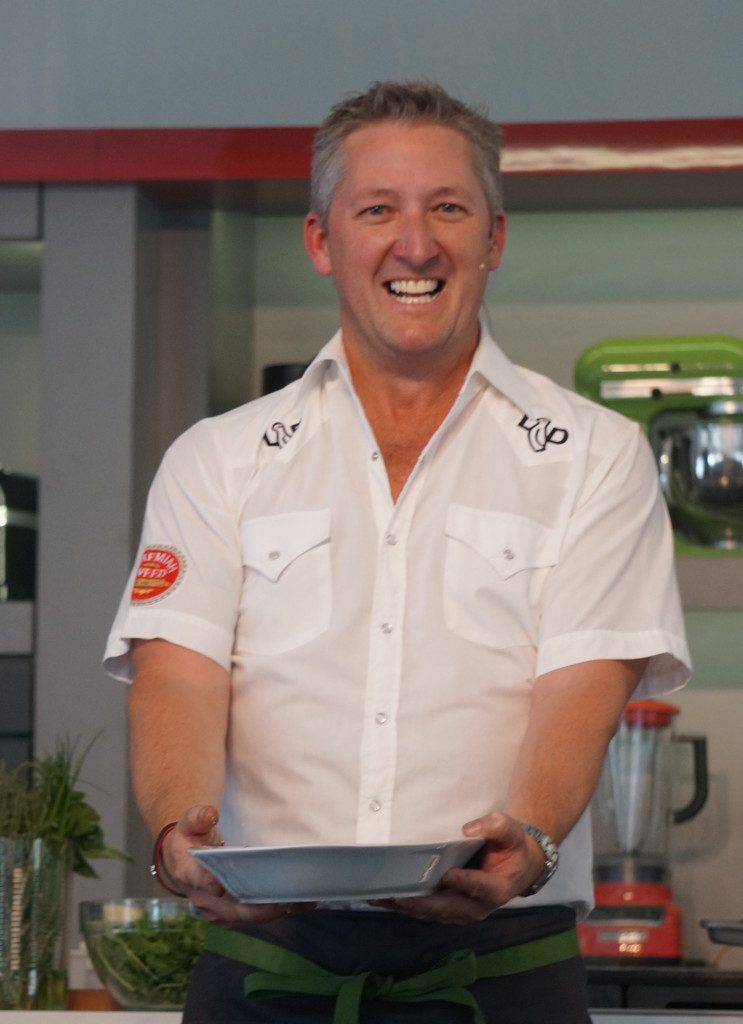This was my third year in a row to catch Tim Love’s class at the Aspen Food & Wine Classic…it is just so entertaining, I can’t help myself. The subject matters are similar: “Rub Versus Marinade”, “Cast Iron Cooking”, to “How to Cook the Perfect Steak”. However, I still find myself learning something new or revisiting something I once knew, along with absorbing some of his pearls of wisdom. For instance, apparently it is important to stay hydrated in high altitude: “Remember that shit,” he proclaims while downing some white wine (Sancerre, to be exact). Mom would have loved him.
In “How to Cook the Perfect Steak”, or more à propos, “How to Cook Some Bad Ass Steak”, Love recommends starting with good meat. He brought out some prime strip sirloin, choice strip and a Certified Angus Beef™ rib eye. What is “Certified Angus Beef™?”, he asked the audience. Nobody offered a correct answer. Too afraid of being called up to shoot tequila, I kept my lips sealed (it was plata, and if I am going to down tequila it sure as heck better be reposado, por lo menos). I thought the answer was the top 2% of prime from Angus (or black hided) cattle. Even though I did not have a recorder, I could have sworn he said that it was top choice beef, and the purpose was for the benefit of selling more beef. Curious, I looked back into my notes from cooking school days, as well as the Certified Angus Beef™ website. What I found is that USDA grades the top of the scale Angus beef, and, using a set of 10 specifications, awards the high standards of Certified Angus Beef™ to what amounts to less than 2% of all beef. Something he mentioned about the grading of meat I found very interesting. While I knew that the grader takes an evaluation of a cut between the 12th and 13th rib of a carcass; what I did not know is that he grades the entire steer from that cut alone. Plus, there is a 50% difference in price between choice and prime. Well, no matter which grade you choose, the key is to cook it perfectly, and he showed us exactly how.
Pan sear versus grill? Both are acceptable but to pan sear is to sear it more evenly. Use peanut oil ideally. Second choice would be grape seed oil. Olive oil will burn and create an acrid flavor. Use kosher salt and cracked pepper to flavor the raw meat. Flaked salt is great to flavor the meat after cooking, and never use iodized salt as it just melts on the meat. Put 2X the amount of salt that you think you need and sear on the sides as you want it crusty all around. For the prime and choice strip sirloins, he used just salt and pepper, but for the fancy rib eye, he made a quick rub. Rib eye is a perfect cut for a rub because of the amount of marbling and fat. The rub absorbs flavor and balances out the richness of the fat, while giving it a bit of an edge. For his rub, he used toasted cumin seeds (you could also use ground), Guajillo chile powder (I have used Ancho as well), coffee grounds (at which point an audience member asked, “Is the coffee ground?”…umm, yeah), cocoa powder, salt, and brown sugar (because it burns better). Oil the steak with the peanut oil and then add the rub.
He stressed the importance of resting the meat. The biggest mistake you can make is to cook the steak to the perfect temperature and then take it off the heat, covering it with foil. He didn’t mention carry-over cooking but I would bet a bottle of Herradura that that plays a part. Undercook it, just a touch. To prepare for a dinner party, for example, cook it just under the perfect temp, then just before serving, pop it under the broiler for a minute, just enough for it to start sizzling. Take it out, slice it, drizzle with olive oil, squeeze some lemon juice, and add the flaked salt. And how does he like his steak? “You know I like my shit medium rare.” God bless Tim Love. xo M












